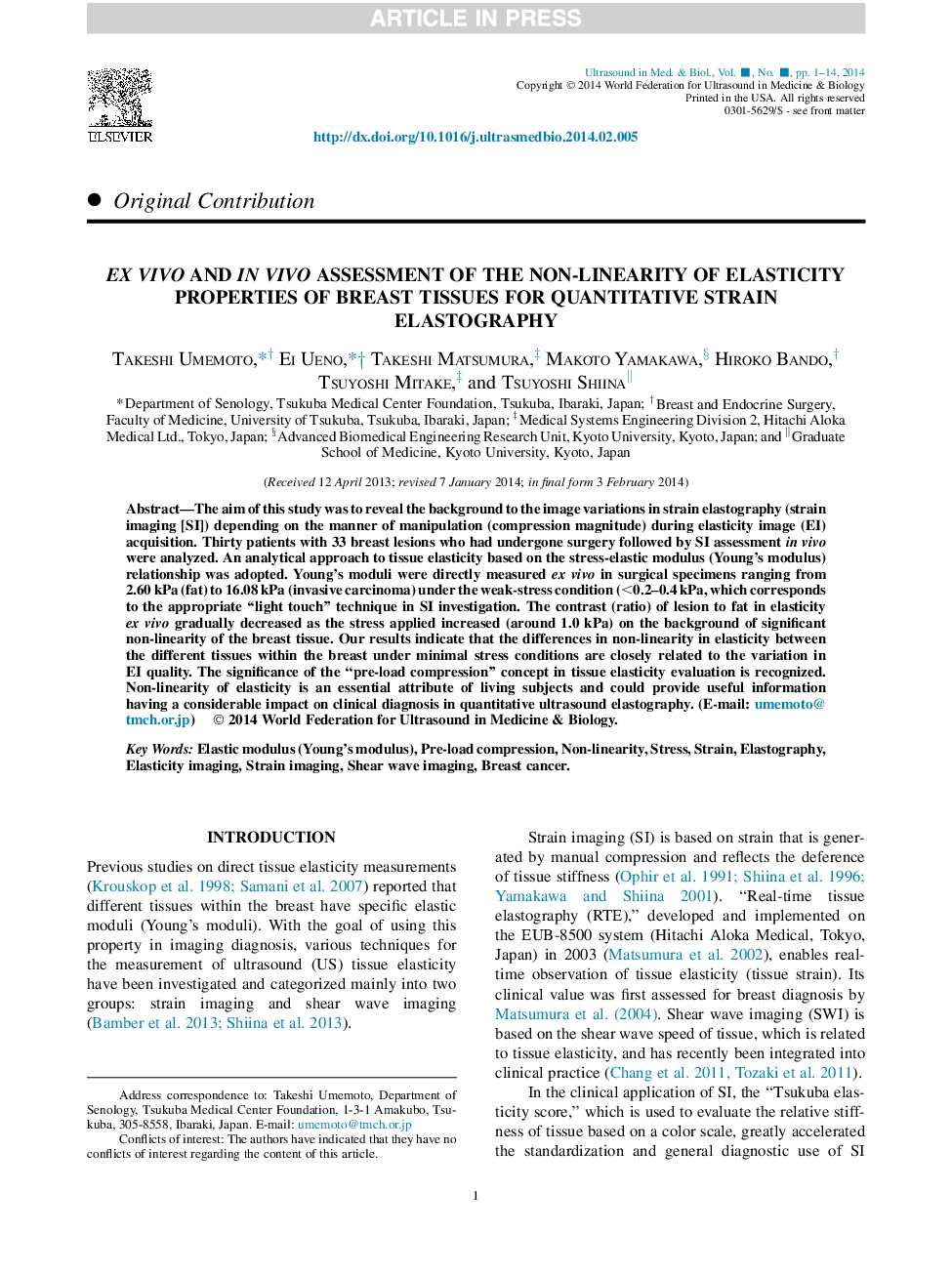| Article ID | Journal | Published Year | Pages | File Type |
|---|---|---|---|---|
| 10691816 | Ultrasound in Medicine & Biology | 2014 | 14 Pages |
Abstract
The aim of this study was to reveal the background to the image variations in strain elastography (strain imaging [SI]) depending on the manner of manipulation (compression magnitude) during elasticity image (EI) acquisition. Thirty patients with 33 breast lesions who had undergone surgery followed by SI assessment in vivo were analyzed. An analytical approach to tissue elasticity based on the stress-elastic modulus (Young's modulus) relationship was adopted. Young's moduli were directly measured ex vivo in surgical specimens ranging from 2.60 kPa (fat) to 16.08 kPa (invasive carcinoma) under the weak-stress condition (<0.2-0.4 kPa, which corresponds to the appropriate “light touch” technique in SI investigation. The contrast (ratio) of lesion to fat in elasticity ex vivo gradually decreased as the stress applied increased (around 1.0 kPa) on the background of significant non-linearity of the breast tissue. Our results indicate that the differences in non-linearity in elasticity between the different tissues within the breast under minimal stress conditions are closely related to the variation in EI quality. The significance of the “pre-load compression” concept in tissue elasticity evaluation is recognized. Non-linearity of elasticity is an essential attribute of living subjects and could provide useful information having a considerable impact on clinical diagnosis in quantitative ultrasound elastography.
Keywords
Related Topics
Physical Sciences and Engineering
Physics and Astronomy
Acoustics and Ultrasonics
Authors
Takeshi Umemoto, Ei Ueno, Takeshi Matsumura, Makoto Yamakawa, Hiroko Bando, Tsuyoshi Mitake, Tsuyoshi Shiina,
